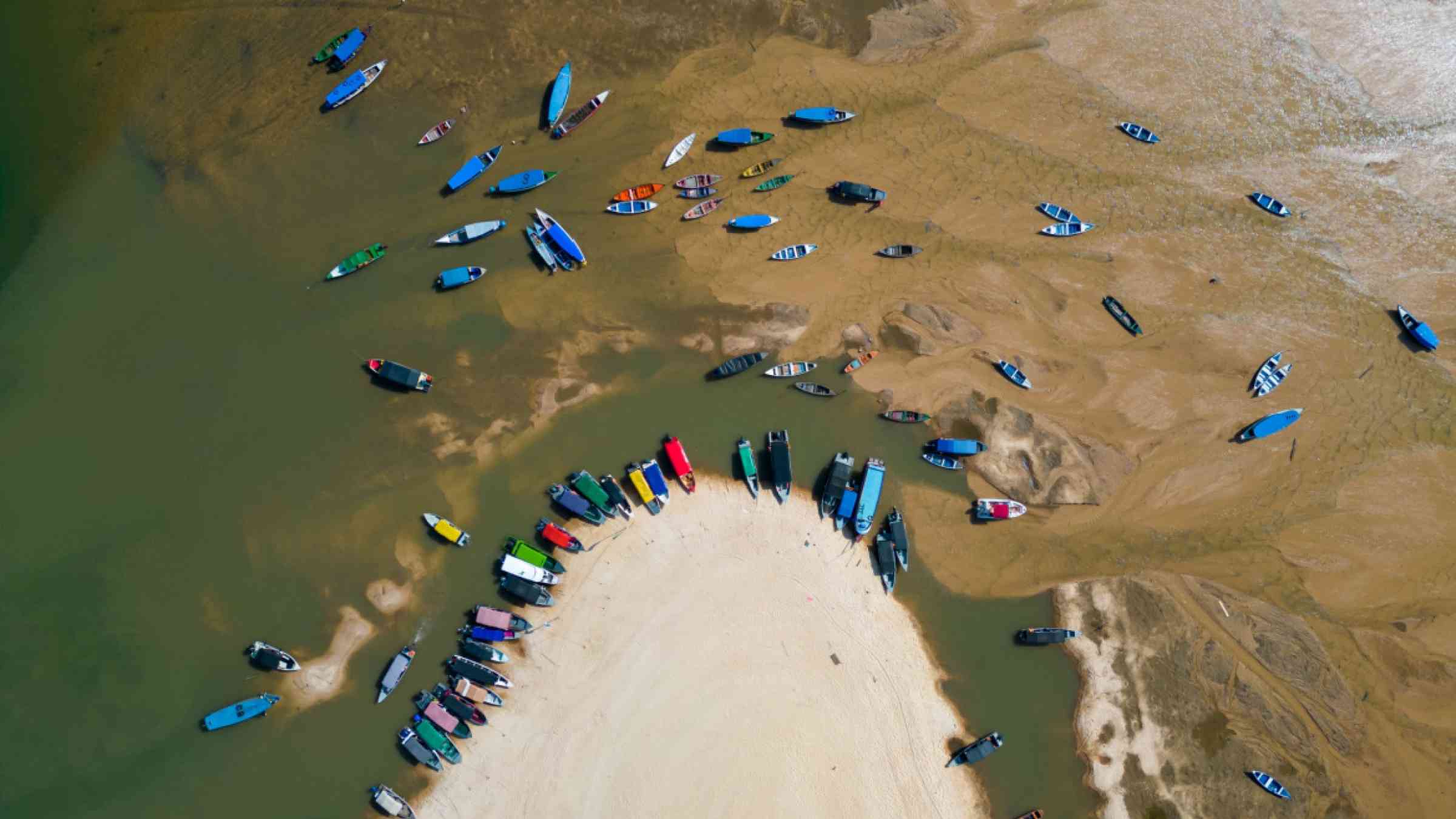Severe droughts limit Amazonian communities' access to basic services

Severe droughts in the Amazon basin over the past two decades have caused low water level periods to last around a month longer than usual, triggering profound impacts on the local population.
A recent study by the Institute of Environmental Science and Technology of the Universitat Autònoma de Barcelona (ICTA-UAB) shows how the environmental impacts of the substantial increase in frequency and intensity of extreme events in the Amazon due to climate change also extend to the Amazon population.
The study, led by Brazilian scientist Letícia Santos de Lima from ICTA-UAB in collaboration with researchers from the Universidade Federal de Minas Gerais (Brazil) and the Woodwell Climate Research Center (USA), was recently published in the journal Communications Earth & Environment.
The study concludes that nearly 50% of non-Indigenous localities and 54% of Indigenous villages of the Brazilian part of the Amazon basin are prone to isolation during severe droughts, where residents rely on rivers and wetlands and move around in boats and vessels, the most important mode of transport for most Amazonian communities.
The severe droughts in 2005, 2010 and 2015-2016 not only drastically reduced water levels in a substantial part of the world's largest river system, but also resulted in longer periods of low water levels, exceeding 100 days compared to the approximately 70 days that are usually expected.
The study thoroughly describes a cascade of impacts on Amazonian communities mediated by the effects of droughts on river navigability. Since remote rural communities heavily rely on inland water transport to access goods, services, reach urban centers, and maintain their livelihoods, severe droughts have exposed them to extended periods of scarcity of goods, isolation, restricted access to healthcare and education, limited access to fishing and hunting sites, and other major impacts.
Using an interdisciplinary approach, the researchers combined spatial analysis, hydrology methods, and news media content analysis to deliver the first spatiotemporal assessment of cross-sectoral impacts of droughts in the Amazon basin.
Dr Leticia Santos de Lima, researcher at ICTA-UAB and lead author of the study, emphasized the urgency of the matter in terms of policy response. "This is the new reality of the Amazon. Scientists have been warning for years that the Amazon basin is facing a substantial increase in the frequency and intensity of extreme events due to climate change, on top of severe changes in its hydrological system due to deforestation and forest degradation. These past droughts as well as the most recent one, 2023-2024, are showing that the impacts on the ecosystems extend severely to the Amazon population", she says.
The authors call attention to the insufficient government response, "which still tends to be reactive rather than grounded in long-term adaptation planning". They also stress that more roads are not the solution for the isolation of communities during droughts, since roads are a well-known driver of deforestation which leads to changes in rainfall and contributes to a higher volume of sediments in rivers, all of that impairing navigability even further.